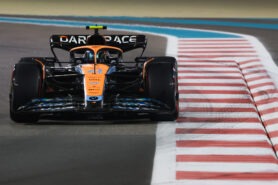Camber
Camber is an important aspect of Formula 1 racing, as it determines the angle of the wheels on a car in relation to the ground. This angle can have a significant impact on the car's performance, and is carefully calibrated by engineers to optimize speed and handling.
The camber angle is measured in degrees, and is determined by the difference between the top and bottom of the wheel. A negative camber angle means that the top of the wheel is tilted inward, while a positive camber angle means that the top of the wheel is tilted outward.
In Formula 1 racing, a negative camber angle is typically used on the front wheels to improve handling and stability. This is because the front wheels are responsible for steering the car, and a negative camber angle helps to keep the tires in contact with the ground, even when the car is turning at high speeds.
On the other hand, a positive camber angle is typically used on the rear wheels to improve speed and acceleration. This is because the rear wheels are responsible for propelling the car forward, and a positive camber angle helps to keep the tires in contact with the ground, even when the car is accelerating at high speeds.
It's worth noting that the camber angle can also have a negative impact on the car's performance if it is not properly calibrated. For example, if the camber angle is too negative, the tires may wear out more quickly and the car may experience a loss of grip and control. Similarly, if the camber angle is too positive, the tires may overheat and the car may experience a loss of speed and acceleration.
In order to achieve optimal performance, Formula 1 teams use a variety of tools and technologies to measure and adjust the camber angle of their cars. This includes high-tech cameras and sensors that can capture detailed images of the tires and wheels, as well as computer-controlled systems that can automatically adjust the camber angle based on data from the cameras and sensors.
Overall, camber is a critical component of Formula 1 racing, as it plays a major role in determining the car's speed, handling, and stability. By carefully calibrating the camber angle, teams can achieve optimal performance and maximize their chances of winning on the track.












LAST 3 F1 Fan COMMENTS